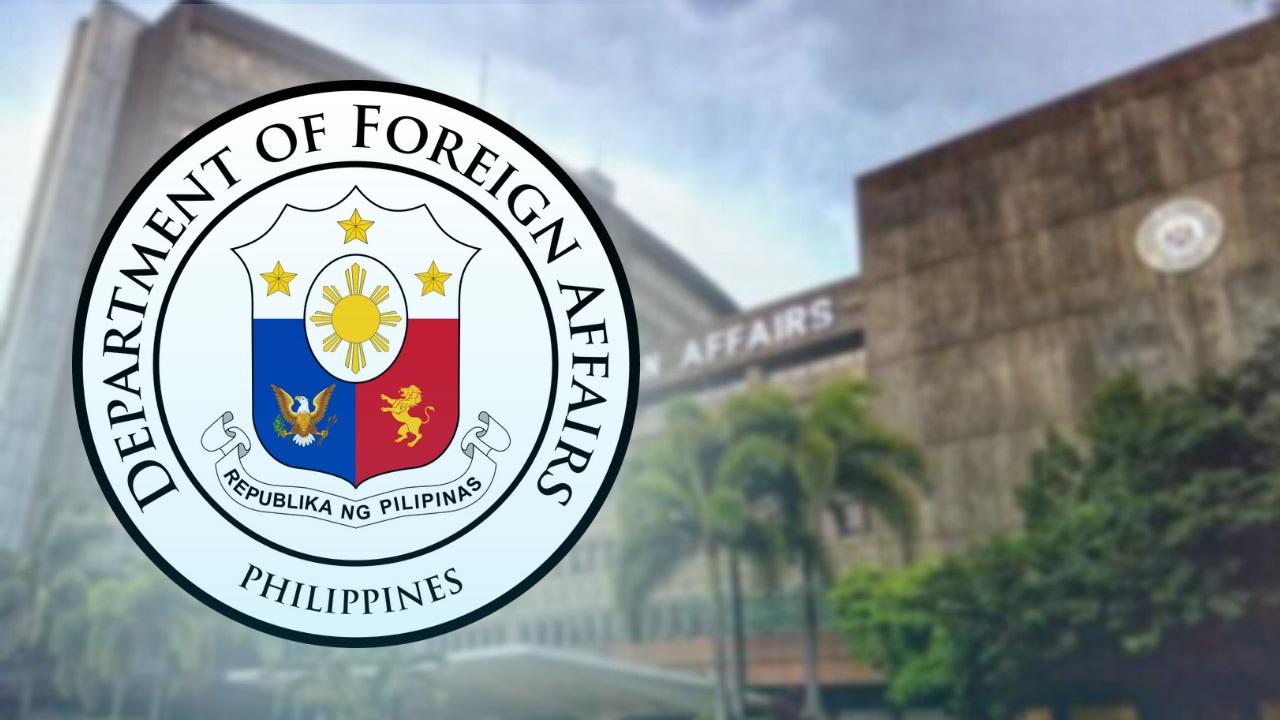DFA exec doubts China will get nod on research in PH waters

DFA logo and building facade. INQUIRER FILE PHOTO)
MANILA, Philippines – An official of the Department of Foreign Affairs (DFA) is doubtful that China can get permission from the Philippines over the conduct of marine scientific research (MSR) within the latter’s territory.
DFA Undersecretary Eduardo De Vega made the statement during a public inquiry of the Senate Special Committee on Philippine Maritime and Admiralty Zones into the submersible drone that was recently recovered off the waters of Masbate.
“Kapag nag-request ang China (If China requests), I would not say no. But it’s extremely doubtful under the circumstances that the working group would agree to grant it,” De Vega said.
He is referring to the technical working group on MSR chaired by the DFA that is tasked to evaluate and decide whether to allow another state to conduct an MSR in the country.
De Vega also noted that there were only 68 MSRs granted by the Philippine government since 1996, which were mostly requested by Japan and conducted in the waters off Mindanao.
Whenever an MSR is conducted, De Vega said the Philippine government requires the foreign scientists to be accompanied by Filipino counterparts, who should also have access to all the data and information acquired during the whole duration of the research.
READ: West Philippine Sea: DFA disputes China’s claims on Ayungin resupply deal
When asked by Senator Francis Tolentino if China will be allowed to conduct MSR even if it is willing to share acquired information with the Philippines, the DFA official emphasized that Beijing should first respect Manila’s sovereignty.
“I’d rather that they at least share the right of our fishermen to Bajo De Masinloc, as according to the UNCLOS (United Nations Convention on the Law of the Sea), rather than talking about sharing info,” he said
Apart from local laws and policies, Article 245 of the UNCLOS says an express consent from the coastal state is needed for a foreign country to conduct MSR in its territorial sea.
The recovered submersible drone, suspected to be owned by China, was recovered only about half a mile from the coast of Barangay Inarawan in San Pascual, Masbate on Dec. 30, 2024.
READ: Tolentino wants Senate probe into suspected Chinese drone near Masbate
Tolentino said the Senate probe focuses on determining whether the drone violated existing maritime and international laws or posed a threat to Philippine sovereignty.
“This hearing aims to ascertain whether this drone is a sovereign property, a warship entitled to recognition, or an autonomous research vessel. Is it part of foreign espionage, or does it necessitate amending our maritime laws?” Tolentino said in his opening statement.
The senator noted that the original drone, identified as H-Y Drone Number 119, is currently under forensic investigation by the Philippine Navy.
A prototype was presented during the hearing to provide context for lawmakers and officials.
Navy: Too early to tell submersible drone’s origin
The Navy, meanwhile, said it is still too early to tell whether the submersible drone off the waters of Masbate originated from China.
“Anybody could put any marking di ba, para lang matago, mamask yung kung saan galing talaga, so we have to be deliberate sa ating approach dito (anybody can put any markings as part of efforts to hide on where the drone came from, we have to be deliberate in our approach),” Navy spokesperson for the West Philippine Sea Rear Admiral Roy Vincent Trinidad said in a radio interview.
Asked on the possible purpose of this platform, Trinidad described the submersible drone as an “underwater glider” that uses inertial navigation, is equipped with a battery and other components.
“Ito ay ginagamit sa pag-check ng information sa karagatan kagaya ng depth ng tubig, yung temperature, yung salinity, at yung ibang information about the ocean so ito ay may gamit sa academics, may gamit sa commercial value, at hindi rin natin ma-downplay na may gamit din for military purposes yung mag-gather the information (this is used to check on information like depth of the water, temperature, salinity and other details about the ocean. It can be used for academics, it also has commercial value, and we cannot downplay the possible military use of the information it is tasked to gather),” he added.
The Navy earlier said a forensic investigation to determine the origin of the submersible drone will take six to eight weeks.
Trinidad said they are not ruling out the possibility that there are similar drones in other parts of Philippine waters.
The Navy official called on local fisherfolk to help report the presence of these drones within the country’s waters. (With Priam Nepomuceno/PNA)